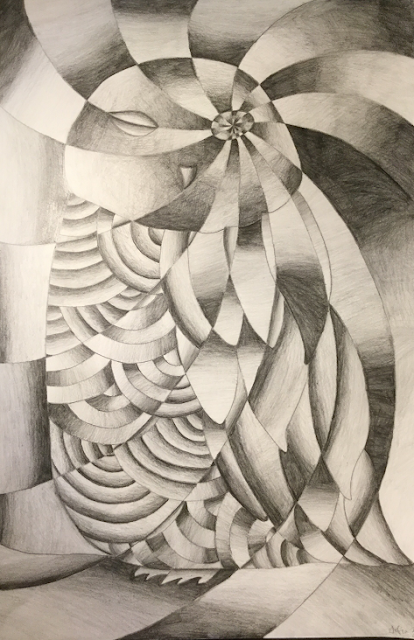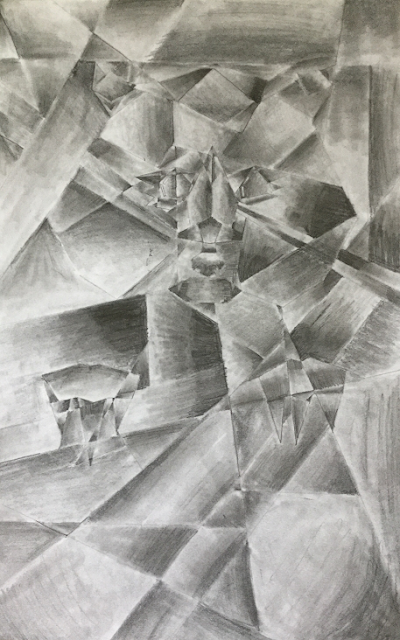The artist: Pablo Picasso
Creative expression: To create a rhythm using lines and /or shapes in an objective design. Students will observe examples of Cubism and then abstract a subject of their choice by breaking it into patterned shapes. The drawings will be shaded in pencil using a large range of values (from light to dark).
Cubism was an art movement started in 1907 by Pablo Picasso and Georges Braque. They were inspired by African sculpture and by the artist Paul Cezanne who said that nature should be thought of in terms of basic shapes. Picasso and Braque broke their subjects into flat surfaces and often painted with muted tones such as grays and tans.
1903 The old blind guitarist by Pablo Picasso
"There is no abstract art. You must always start with something. Afterward, you can remove all traces of reality." -By Pablo Picasso
What art elements do you see repeated in each drawing?
Which elements most attract you eye: line and shape, or color?
Which drawing seems active, and which seems clam?
1. Select a subject of which you can make a contour line drawing onto a 12"x18" paper.
2, Focus on a single object with a simple outline and minimal detail, such as a car, insect, person or fish.
3. "Shatter" the subject in some way by breaking it up with lines or shapes or patterns of some sort. These lines will overlap your first drawing. (There are numerous methods you could use…be creative. Think of various ways that lines break up objects: shattered glass, wavy lines of water, spiral lines as seen on a snail shell, geometrical divisions of shapes.) The objective is to create more shapes in your drawing, like a giant puzzle. (Look at examples of Cubism for inspiration.)
4. In your drawing, focus on each individual shape you have created, and apply the entire range of value (from black to light gray) in each shape. Proceed from shape to shape, deciding which part should be the richest black and which should be the lightest gray. Sometimes you may want to alternate from one shape to the next. You may also want to vary the direction of your shading inside your object from that outside your object in order to emphasize it.
5. Fill the entire paper with values, including positive shapes of the object and negative background shapes.
6, Use "H" ( hard) pencils through"6B" ( soft) in each shape.
Hints:
- Try the contrast
- Keep scrap paper underhand.
- Save smudging for the last step.
Criteria 1- Student chose the appropriate subject to draw and successfully enlarge it onto the drawing paper.
Criteria 2- Student understands the concept of value in art, and can use a pencil to express a full range of values from black to light gray. The completed drawing shows that range.
Criteria3- Student used creativity to “shatter” the drawing in order to create new shapes over the original. Filled these shapes with value in an interesting way that enhanced the original subject.
Criteria 4- Effort: Took time to develop the idea and complete project? (Didn’t rush) Good use of class time?
Criteria 5- Craftsmanship: Neat, clean and complete? Skillful use of the art tools and media?
First Draft Examples:
Art Examples:








































